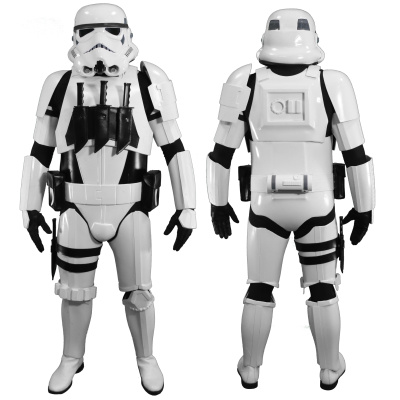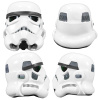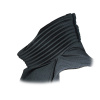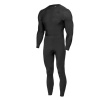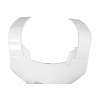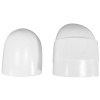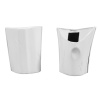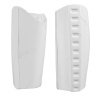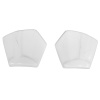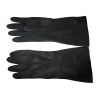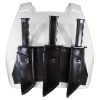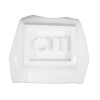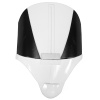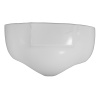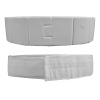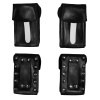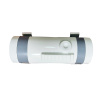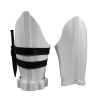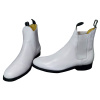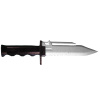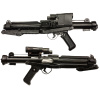Task Force 99: Cav
Visit the Gallery for this Costume for more models and parts views
Model TX-99924, Photo by Robert Phelps
Visit the Gallery for this Costume for more models and parts views.
Description: Task Force 99: Cav
Prefix: TX
Detachment: Spec Ops Detachment
Context: Marvel Comics — Star Wars
Cav is a Special Commando Advanced Recon (SCAR) trooper in Task Force 99, a squad within the Galactic Empire’s Stormtrooper Corps. Cav served as the squad’s melee specialist, capable of attacking targets in close quarters combat. Cav participated in Task Force 99’s mission to the Ghost Moon in order to take care of a group of Rebels hiding there.
This Visual Guide has been reviewed by the detachment staff and the LMO team and is certified for use as a minimum approval guideline for GMLs. GMLs are free to approve this costume type.
This is a visual guide used for 501st costume approval, not a how-to for construction. Construction details are found at the costume's Detachment website. Measurements provided here are generalized, and not criteria for approval. All 501st costumes are proportionate to the wearer in terms of size, fit, and scale. During evaluation, both text and images (CRL and Reference) must be considered. When in doubt about a feature of a submitted costume, GMLs should post questions in the Legion forum's DL/GML peer review section.
Required Costume Components
The following costume components are present and appear as described below. For 501st membership only the requirements in black need to be met. This Detachment defines additional, optional costuming details listed in blue and red. Please visit the Detachment website for more details on these options.
Helmet
- Lenses must be sufficiently dark enough to obscure the costumer’s eyes. They are either flat or bubbled. Acceptable colors are black or dark green.
- The “ear” bars have three or four bumps and are gray or painted gray, with a black outline. Painting the bumps with rank stripes in black is optional.
- The frown must have 8 teeth cut out and any coloring must not leave the indented area.
- Acceptable color is gray.
- Black mesh must be used to obscure the face of the wearer.
- The tube stripes are blue or black in color and may number between 9 and 16 per side with the curve bends extending backwards. These can be either hand painted or decals.
- Vocoder (vertically ribbed chin detail) is painted black.
- The aerators (cylinders on either side of the vocoder) are black, and screening is silver.
- The interior of the aerator is white.
- Traps (trapezoids on dome of helmet) and tears (area beneath the corners of eye lenses) can be hand painted or decals.
- Acceptable color is gray. Rear traps and tears have vertical black lines.
- There is a singular “X” slash/cut/scratch visible on the left forehead area above the black trim, matching the reference images.
- The helmet will be moderately weathered. See special notes for permissible weathering.
OPTIONAL Level two certification (if applicable):
- Lenses are bubbled.
- Ears shall have three screws per side, one above and one below the ear bar and one at the base of the helmet. Screws are slotted, flat topped, countersunk and painted white.
- Ear bars have four bumps only, not three.
- Tube stripes are black in color.
- Correct ‘Hovi mic’ aerator tips.
- Screens used shall be of a wide type mesh.
- Neck trim shall be an S-type profile rather than a U-type profile.
Neck Seal
- Black with horizontal ribs, fitted to the wearer, and extending from the base of the neck to conceal the entire neck.
Under Suit
- Black non-textured material, either one-piece or two-piece construction with no visible zippers or logos.
Shoulder Straps
- These shall be securely mounted in front and shall free float in the back. They can be affixed with Velcro or adhesive.
- Straps texture is smooth. No visible rivets are allowed to secure the straps and no elastic is used to secure straps in the back.
- The shoulder straps will be moderately weathered. See special notes for permissible weathering.
OPTIONAL Level two certification (if applicable):
- Straps shall be glued in front.
- Straps shall taper in thickness, being thinner at the front and back ends.
Shoulder Armor
- Left shoulder is uniquely shaped with the following details:
- Rounds out at the top closest to the shoulder.
- On the inside and outside there is a trapezoidal section that protrudes out.
- The bottom is angled and not rounded.
- On the top of the shoulder there is a raised detail that resembles an intake/scoop that matches the reference material.
- Right shoulder is smooth in appearance similar to a scout trooper shoulder bell.
- The left shoulder is larger than the right shoulder and sits higher than the right shoulder due to its size.
- Shoulders have a black elastic strap that wraps around the inside of the bicep.
- The shoulder armor will be moderately weathered. See special notes for permissible weathering.
OPTIONAL Level two certification (if applicable):
- There should be a minimal gap between the shoulder armor and chest/back plate.
Biceps
- Biceps are fully closed.
- Overlap construction is only allowed for kits that come with the cover strip molded into the part.
- The biceps will be moderately weathered. See special notes for permissible weathering.
OPTIONAL Level two certification (if applicable):
- Must be constructed using the butt plate joint and cover strip method. Overlap construction is not allowed.
- There shall be a return edge that is present with a maximum width of 3⁄8" (10mm) width.
Forearms
- Forearms are fully sealed and closed.
- Overlap construction is only allowed for kits that come with the cover strip molded into the part.
- The forearms will be moderately weathered. See special notes for permissible weathering.
OPTIONAL Level two certification (if applicable):
- Must be constructed using the butt plate joint and cover strip method. Overlap construction is not allowed.
- There shall be no return edges present on the inside of the front of the forearms.
Hand Plates
- Pentagonal in shape, hand plates should be securely mounted over the back of the glove. These can be made up of plastic, latex or latex-like material.
- The hand plates will be moderately weathered. See special notes for permissible weathering.
OPTIONAL Level two certification (if applicable):
- Handguards shall be latex or latex-like, painted white and affixed with adhesive to rubber gloves with no visible strapping or stitching.
Gloves
- Black in color, made of either rubber, nomex, leather, or leather-like material, with no visible straps or logos/designs. The fingers are enclosed, non-textured.
OPTIONAL Level two certification (if applicable):
- Gloves shall be rubber or rubber-like chemical gloves, in black.
Chest Armor
- Chest armor overlaps abdominal armor.
- Chest is smooth in appearance.
- There is a knives sheath/chest pad in the center of the chest that is made out of leather or leather-like material and has an irregular hexagon shape with the following details:
- The bottom of the knives sheath is curved following the bottom of the chest armor.
- There are three (3) knife sheaths equally spaced along the chest pad and house each knife’s blade.
- On each sheath there is a strap on the right side with a black snap in the middle. The snap does not need to be functional.
- Within each pouch there is a knife or if local law prohibits the use of prop knives then the following details are present:
- Each sheath has the appearance of being filled with a knife.
- Each sheath has only the handle part of the knife and is affixed to the pouch.
- There is no visible method of attachment of the knives sheath/chest pad to the chest armor.
- The chest armor will be moderately weathered. See special notes for permissible weathering.
OPTIONAL Level two certification (if applicable):
- Chest plate shall have return edges all around, maximum width of 3⁄8" (10mm).
- Chest and back shall be connected with a white fabric (preferably elastic) that does not stick out or show under the shoulder plastic straps.
Back Armor
- Back plate contains an “O II” design with little or no overlap of the kidney plate.
- The back armor will be moderately weathered. See special notes for permissible weathering.
OPTIONAL Level two certification (if applicable):
- Back plate shall have return edges all around, maximum width of 3⁄8 inches (0.9cm).
Abdomen Armor
- The abdomen and cod piece may be combined/fused to a single plate/one piece or separate.
- Cod piece is white in color.
- There are two raised lines which run up the center of the abdomen armor up under the chest armor. This center section of the armor is white and on each side there are recessed lines that split the white from black towards the sides of the abdomen armor. These recessed lines are diagonal and get wider the further up armor they go and narrow as they go towards the cod piece.
- There are no visible snaps or rivets.
- Abdomen armor must match in-comic references.
- The abdomen armor will be moderately weathered. See special notes for permissible weathering.
OPTIONAL Level two certification (if applicable):
- The cod piece is separate from the abdomen armor.
- There should be no gap between the ab and kidney plate, a single visible seam line is ideal. Any gap between the abdomen and kidney armor shall be no more than ½" (12.5mm). Any shims used to achieve this effect shall have a similar material and color as with the abdomen and kidney armor. Shims should be flush and seams are allowed.
- There shall be no visible rivets or snaps on the exterior of the armor.
Kidney Armor
- The kidney armor is separate from the posterior armor (ANH style) and lines up with the abdomen armor.
- The top of the kidney armor is flush to or under the back armor.
- The kidney armor will be moderately weathered. See special notes for permissible weathering.
Posterior Armor
- The posterior armor is separate from the kidney armor (ANH style).
- The posterior armor will be moderately weathered. See special notes for permissible weathering.
Belt
- Belt armor is approximately 3" (76.2mm) tall and divided into 1.75" (44.5mm) wide segments, ending on the hips of the wearer.
- The front armor segments have a key/slot detail.
- The soft belt proper is made of canvas, or material with a canvas covering and must be 3" to 3.5" (75–90mm) wide.
- Belt pouches are mounted at the hips, covering where the belt armor terminates to the soft belt proper.
- The belt closes by overlapping in the rear center of the kidney/posterior armor where the thermal detonator is attached.
- The belt armor will be moderately weathered. See special notes for permissible weathering.
Pouches
- There are two black medium-sized Spanish pouches that are worn on each side of the hip.
- Each pouch has the following approximate dimensions: 3.5" x 6" x 2" (88.9mm x 152.4mm x 50.8mm).
- Pouches are closed with a white pull tab that is approximately 1" (25.4mm) and not a snap or button.
- Any stitching on the pouch is black.
OPTIONAL Level two certification (if applicable):
- Pouches appear full.
Thermal Detonator
- (A.K.A O2 canister) is attached to the center back of the belt.
- Detonator consists of a gray cylinder with 2 to 2.68 inches (5 to 6.8cm) in diameter with white end caps on each end and a white control panel pad. The white control panel pad faces upwards, with the controls/round washer-style detail closest to the right end cap.
- The total length is approximately 7.5 inches (19cm).
- No silver stickers or silver paint is allowed.
- The detonator is attached to the white canvas belt with 1 inch (2.5cm) silver metal or metallic-appearing clips.
OPTIONAL Level two certification (if applicable):
- Clips shall be attached with slotted, pan head style screws, and painted black (two per clip). V-head screws are not permitted.
- Thermal detonator belt clips are positioned with little to no gap between the clips and the end caps.
- Belt clips shall be made of metal and must be silver.
Thigh Armor
- The thigh armor may open and firmly close in the back allowing the two halves to appear sealed.
- The small ammo belt is installed on the bottom of the right thigh.
- It may be attached to the thigh armor with a solid head rivet or fastener, painted white in the upper corner and fastened to the lower thigh ridge. It may be attached to the thigh armor with a solid head rivet or fastener, painted white in the upper corner and fastened to the lower thigh ridge. Rivet diameter should be approximately 5⁄16 inches (0.8cm). The rivets used shall be single cap, double cap, or split rivets. Standard pop rivets are not allowed.
- The bottom corners of the thigh ammo belt shall be rounded off.
- On the right thigh there is a knife sheath with the following details:
- The sheath is in proportion to the wearer and matches the sheaths on the chest pad. If local law prohibits the use of prop knives, then the following details are present:
- The sheath has the appearance of being filled with a knife.
- The sheath has only the handle part of the knife and is affixed to the pouch.
- On the sheath there is a strap on the right side with a black snap in the middle. The snap does not need to be functional.
- The sheath is held on the right thigh by a singular strap or two straps. The strap color will be black and they will be made of elastic, leather, or leather-like material.
- If utilizing a singular strap then it is approximately 4" (101.6mm) wide.
- If utilizing two straps then each strap is approximately 2" (50.8mm) wide.
- Overlap construction is only allowable for kits that come with the cover strip molded into the part.
- Cover strips must end at the top of the lower ridge in front and back.
- If the two parts of the thigh armor cannot fit the user, cover strip should not be too wide. Instead, shims can be used to close the back of the thigh armor. Shims shall have a similar material and color to the whole armor, and should be flush without seams.
- The thigh armor will be moderately weathered. See special notes for permissible weathering.
OPTIONAL Level two certification (if applicable):
- The thigh ammo belt is not attached to the thigh armor with a solid head rivet or fastener. There is no visible method of attachment.
- Must be constructed using the butt joint cover strip method. Overlap construction is not allowed.
Lower Leg Armor
- The shin armor is able to open and firmly close in the back allowing the two halves to appear sealed. The trapezoid knee plate is affixed to the top of the left shin.
- Overlap construction is only allowable for kits that come with the cover strip molded into the part.
- The lower leg armor will be moderately weathered. See special notes for permissible weathering.
OPTIONAL Level two certification (if applicable):
- Sniper knee plate must be aligned with the ridges on the shin.
- The sniper knee plate must not have visible rivets or fasteners attaching it to the shin.
- Shins are constructed using the butt joint cover strip method. Overlap construction is not allowed.
Boots
- Boots are above ankle height and made of white leather or leather-like material.
- Small U-shaped elastic sections on both sides of the ankle.
- Flat sole with a short heel.
- No buckles or laces.
- Jodhpur/Chelsea-type boots or an equivalent style is acceptable.
- Elvis or Mariachi boots are not allowed.
OPTIONAL Level two certification (if applicable):
- There is no seam present on the front of the boot.
Optional Accessories
Items below are optional costume accessories. These items are not required for approval, but if present appear as described below. If adding in an accessory after initial approval, the item still needs to be submitted to local GML for approval before use.
Knives
- Each knife is similar in appearance to that of a Bowie knife and matches the reference photos.
- The handle and guard of the knife is flat black and has finger grooves present. There shall be no pins/rivets on the handle.
- The blade itself is serrated from the guard to about halfway outward towards the end of the knife. After the serrated edge it is beveled/grinded to form a point at the end.
- There is a recessed portion on each side of the blade nearest the guard and a separate pointed section on the top of each blade.
- The blade itself should be a silver or silver metallic color resembling metal.
OPTIONAL Level two certification (if applicable):
- The blade is painted a silver metallic color or in a finish that resembles metal.
E-11 Blaster
- Based on a real or replica Sterling sub-machine gun, scratch-built, or a modified commercial toy Stormtrooper blaster.
OPTIONAL Level two certification (if applicable):
- Folding stock.
- Stock does not need to function.
- A real or replica ammo counter - based off of a Hengstler counter - should be present.
- D-ring mounted on the rear.
- Correct style scope.
- Two power cylinders on the magazine.
- Scratch-built, resin cast, Hyperfirm rubber cast blasters should have a total of 6 t-racks on blaster (leaving the lowest row on the Hengstler side un-covered).
- If using the Hasbro E11 toy blaster, it is modified to have the correct number of T-tracks (6 total), with a lower row of open vent holes on the magazine housing side.
- This is accomplished by covering the pre-existing rows of holes with T-tracks, then grinding off the lower integrated T-track on the magazine housing side, and drilling a new row of holes in its place.
- 3D printed blasters can not contain visible print lines and must be sanded smooth for a more realistic appearance.
